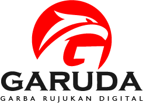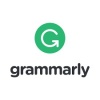ANALISIS KEBUTUHAN PEMBELAJARAN SEJARAH DI SMA N 2 NANGA TAYAP KABUPATEN KETAPANG KALIMANTAN BARAT: LANGKAH AWAL MENUJU PENDIRIAN LABORATORIUM SEJARAH
Muhammad Syaifulloh(1*), Desy Fitriana(2),
(1) Program Studi Pendidikan Sejarah IKIP PGRI Pontianak
(2) SMA N 2 Nanga Tayap Kabupaten Ketapang
(*) Corresponding Author
Abstract
Penelitian ini bertujuan untuk menganalisis kebutuhan pembelajaran sejarah di SMA dan bagaimana pendirian laboratorium sejarah dapat memenuhi kebutuhan tersebut. Penelitian ini menggunakan desain penelitian kualitatif dengan pendekatan studi kasus. Data dikumpulkan melalui wawancara mendalam dengan siswa, guru sejarah, dan kepala sekolah, observasi partisipan di laboratorium sejarah, dan analisis dokumen kurikulum sejarah dan bahan ajar sejarah.
Hasil penelitian menunjukkan bahwa siswa SMA memiliki kebutuhan yang beragam dalam pembelajaran sejarah, seperti kebutuhan akan metode pembelajaran yang lebih interaktif, akses ke sumber belajar yang lebih beragam, dan kesempatan untuk mempraktikkan pengetahuan sejarah. Pendirian laboratorium sejarah dapat memenuhi kebutuhan tersebut dengan menyediakan ruang belajar yang interaktif, dilengkapi dengan berbagai sumber belajar, dan memungkinkan siswa untuk melakukan eksperimen dan simulasi sejarah.
Keywords
Full Text:
PDFReferences
Appleby, J. H., Hunt, L., & Jacob, M. (1994). Telling the truth about history. New York: W. W. Norton & Company.
Barton, K. C., & Levstik, L. S. (2004). Teaching history for the common good. Mahwah, NJ: Lawrence Erlbaum Associates.
Bogdan, R. C., & Biklen, S. K. (2007). Qualitative research for education: An introduction to theory and methods (5th ed.). Boston: Allyn & Bacon.
Brooks, J. G., & Brooks, M. G. (1993). The case for constructivism in science education. New York: Routledge.
Creswell, J. W. (2014). Research design: Qualitative, quantitative, and mixed methods approaches (4th ed.). New York: Sage publications.
Darmawan, D. (2016). Meningkatkan Keterampilan Berpikir Kritis Siswa SMA melalui Pembelajaran Sejarah dengan Pendekatan Inkuiri. Jurnal Pendidikan Sejarah, 8(2), 145-158.
Duffy, G., & Cunningham, D. J. (1996). Constructivism: Views from the classroom. New York: Teachers College Press.
Gardner, H. (1993). Frames of mind: The theory of multiple intelligences. New York: Basic Books.
Gutmann, A. (1999). Democratic education. Princeton, NJ: Princeton University Press.
Johnson, C. M. (2009). A constructivist approach to teaching history. New York: Routledge.
Jonassen, D. H. (1991). Evaluating constructivist learning. New York: Merrill.
Kusuma, D. (2017). Pemanfaatan Media Pembelajaran Berbasis Teknologi Informasi dan Komunikasi dalam Pembelajaran Sejarah di SMA. Jurnal Ilmiah Pendidikan Sejarah, 1(1), 51-62.
Lee, P. D., & Ashby, M. C. (2009). Teaching and learning about the Holocaust in American secondary schools. New York: Routledge.
Miles, M. B., & Huberman, A. M. (1994). Qualitative data analysis: A sourcebook of new methods (2nd ed.). Sage Publications.
Nasir, N. I. S., & Saxe, G. B. (2003). Ethnic and academic identities: A cultural practice perspective on emerging tensions and their management in the lives of minority students. Educational Researcher, 32(5), 14-18.
National Council for the Social Studies. (2010). College, career, and civic life (C3) framework for social studies state standards: Guidance for enhancing the rigor of K-12 social studies. Washington, DC: National Council for the Social Studies.
Ormrod, J. E. (2016). Educational psychology: Developing learners (9th ed.). New York: Pearson Education.
Piaget, J. (1970). Science of education and the psychology of the child. Trans. D. Coltman.
Shanahan, T., & Shanahan, C. (2008). Teaching disciplinary literacy to adolescents: Rethinking content-area literacy. Harvard educational review, 78(1), 40-59.
Seixas, P., & Morton, S. (2013). The big six historical thinking concepts. Toronto: Nelson Education.
Supardi, S. (2018). Meningkatkan Minat Belajar Sejarah Siswa SMA melalui Penerapan Model Pembelajaran Kooperatif Tipe Jigsaw. Jurnal Pendidikan Sejarah Universitas Pendidikan Indonesia, 9(1), 1-12.
Suyanto, P. (2021). Peran Laboratorium Sejarah dalam Meningkatkan Hasil Belajar Sejarah Siswa SMA. Jurnal Ilmiah Pendidikan Sejarah Universitas Negeri Semarang, 12(2), 201-210.
Trianto, T. (2019). Model-Model Pembelajaran Inovatif Berbasis Teknologi Informasi dan Komunikasi. Yogyakarta: Pustaka Pelajar.
Vygotsky, L. S. (1978). Mind in society: The development of higher psychological processes. Cambridge, MA: Harvard University Press.
Wibowo, A. (2022). Pengembangan Model Pembelajaran Sejarah Berbasis Laboratorium di SMA. Jurnal Pendidikan Sejarah Universitas Sebelas Maret, 14(2), 179-190.
Wulandari, R. (2020). Pentingnya Akses ke Sumber Belajar Sejarah yang Beragam bagi Siswa SMA. Jurnal Pendidikan dan Kebudayaan, 22(1), 55-64.
DOI: https://doi.org/10.30998/je.v4i2.2686
Article Metrics
 Abstract Views : 161
|
Abstract Views : 161
|  PDF Views : 137
PDF Views : 137
Refbacks
- There are currently no refbacks.
Program Studi Pendidikan Sejarah
Universitas Indraprasta PGRI
Address:
Journal of Social Sciences and Humanities is licensed under a Creative Commons Attribution 4.0 International License.












